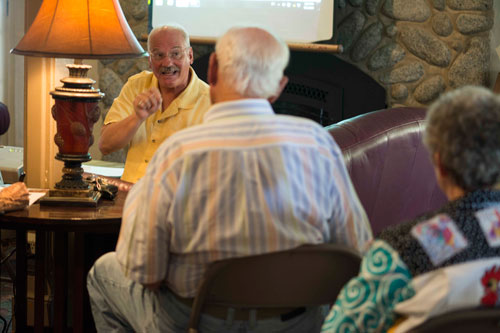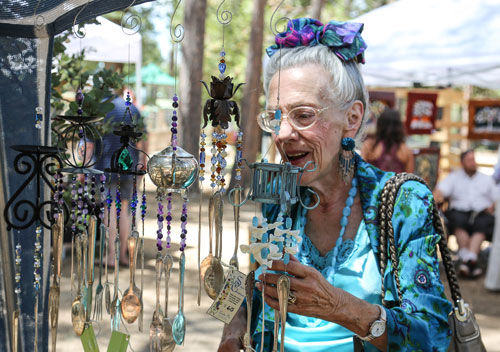
Photo by John Pacheco
The Idyllwild Historic Preservation District Review Board met with a number of property owners and renters whose properties fall within district boundaries to explain the district and the renovation permitting process.
At the Sunday afternoon presentation, Riverside County Historic Preservation Officer Keith Herron reviewed Idyllwild’s history as a settlement, why and how the historic preservation district came to be enacted, which properties are affected and how those properties could make approved changes to their buildings’ exteriors.
Herron told the 20 attendees about the county-contracted survey that determined more than 50 buildings in the then-proposed historic corridor that would qualify as contributing properties of historical value; of the push by 3rd District Supervisor Jeff Stone to protect Idyllwild’s historic character through enactment of an ordinance; of the nomination of Idyllwild as the county’s only historic district in the unincorporated areas; and of the adoption of the ordinance by the Board of Supervisors and the drafting of district renovation guidelines and appointment of the local board.
Herron was asked whether the review board would “swoop down” on existing building owners within the district to enforce compliance. Herron said the review board’s purview begins only when an alteration permit is submitted to county planning and to the review board. He said existing historical structures are not affected unless owners seek to substantially renovate building exteriors.
Herron talked of the process property owners must follow to pursue exterior renovations of contributing properties within the district. He clarified that “routine maintenance” of the exterior of a contributing resource would not necessitate obtaining a Historic District Alteration Permit (see www.rivcoparks.org/?s=idyllwild+historic+district# for definition of “routine maintenance” and guidelines for what kinds of alternations require a permit.)
Herron also presented a flowchart detailing the steps property owners must follow if their property is a contributing district resource.
Questions also were raised regarding the permitting process cost. Herron has been trying to find that out but said he believed it would depend upon the scope of the proposed project. With only one application in the pipeline, he said it is not clear how the cost of the permitting process will evolve.
As with any major renovation project, owners must first submit an application to the county planning director; the director forwards the application to the Idyllwild local Historic District Review Board; the review board, working with the property owner, considers the application, makes suggestions after comparing the proposed alterations with the guidelines, and forwards either a denial, a recommendation for approval or a recommendation for approval with conditions to the planning director.
During the process, other interested county agencies have the opportunity to review the project and prepare comments and recommendations for the review board to consider. Herron noted that the decision of the planning director is final.
Herron also noted the board’s review of its first renovation application, for the restaurant FERRO that will occupy the premises previously housing Hidden Village Chinese Restaurant. He commented favorably how both property and business owners addressed board concerns and created what he called a “model for cooperation” that will serve the board and the district in future application reviews.
He also noted that the district ordinance does not cover new construction; and that neither the review board nor the county could prohibit new construction at odds with the existing village and historic district character.
When asked if other historic districts have provisions prohibiting new construction that contradicts existing district guidelines, Herron answered that many do but that it was thought, when this ordinance was proposed, compliance for new construction should be voluntary.
“We can make suggestions and try to influence the builder, but we have no legal authority to prohibit,” said Herron.













